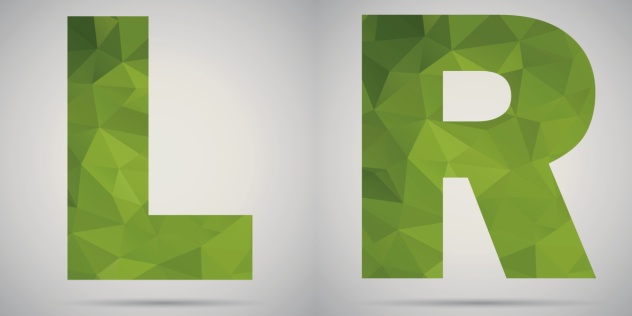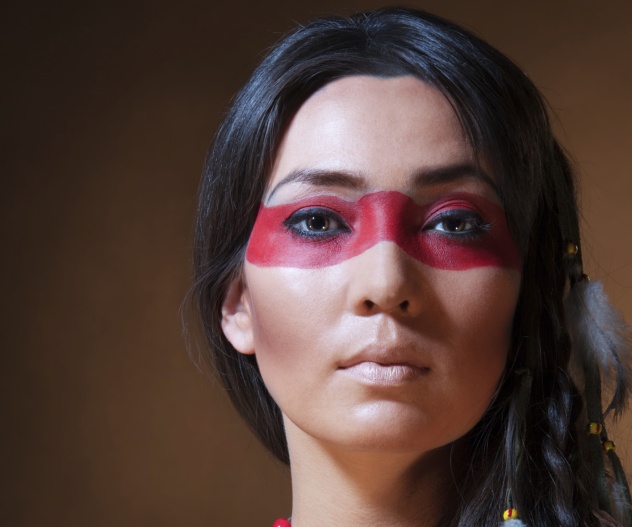10 Americans Can’t Understand Sarcasm
Many non-Americans, particularly the British, enjoy lampooning the US for an inability to understand sarcasm, and one only needs to compare the British and American versions of The Office to recognize the gulf between the humor styles of the two nations. The British tendency to deliver ironic or sarcastic statements in a deadpan manner leads to confusion for many Americans. But where did the difference come from? According to Claus Grube, Danish Ambassador to the UK, the British tendency for sarcasm is the legacy of the Vikings, who made wry understatements while looting monasteries and raiding coastal villages. A 2008 study suggested that the British tendency for biting sarcasm and self-deprecation may have a genetic component, linking negative humor with a distinct genotype common to Brits but absent in Americans. However, the largest difference is simply cultural. Anthropologists classify different human societies based on whether they were high-context or low-context societies. High-context cultures tend to communicate less information directly, relying on mutual social expectations, non-verbal communication, and unspoken rules and norms. By contrast, low-context cultures tend to communicate primarily through directly spoken information. Both British and American culture fall on the low end of the spectrum, particularly when compared to extremely high-context cultures in East Asia. However, the United Kingdom is more high-context than the United States. This is largely due to history. While the UK has long-standing traditions of its class-based society, in the United States, the mix of different cultures meant that communication had to be more literal to get the meaning across. The result is that British humor relies more on implied meaning, while American humor is more literal. This doesn’t mean Americans don’t understand sarcasm, merely that it plays a less prominent role in society. Comedian Simon Pegg penned an article for the Guardian defending American irony, citing examples such as The Simpsons, Seinfeld, Curb Your Enthusiasm, and more. He did admit that occasionally the characteristic British style of irony does go over American heads, giving the example of an awkward exchange between a British friend and an American friend: B: I had to go to my granddad’s funeral last week. A: Sorry to hear that. B: Don’t be. It was the first time he ever paid for the drinks. A: I see.
9 East African Runners
East Africans, particularly Kenyans and Ethiopians, are often seen as fantastic long-distance runners, thanks to their dominance of Olympic events, the American and European road racing circuit, and world cross-country events. Some have attempted to explain this tendency through reference to environmental factors. Many top East African runners hail from three mountainous regions—Nandi in Kenya and Arsi and Shewa in Ethiopia. The idea is that athletes who live and train at these high altitudes have more red blood cells, allowing them an edge in endurance training, as well as more efficient lungs designed to extract oxygen from thinner air. This doesn’t explain, however, why Nepal, Peru, or Switzerland haven’t produced many world-class runners. Other explanations point to cultural differences, explained as Kenyans running to and from school every day, running barefoot, or eating a simple diet. These cultural explanations don’t always stand up to scrutiny. Kenyan kids mostly walk or bike to school like everyone else, and other regions of the world with low footwear rates and simple diets don’t produce athletes quite so readily. Some scientific research indicates a genetic component to the East African advantage. One study saw significant differences in body mass index and bone structure between Western professional runners and superior East African amateur runners. The latter were said to enjoy less mass for their height, longer legs, shorter torsos, and more slender limbs, described by one researcher as “bird-like.” Not every everyone agrees with this assessment, with Swedish medical scientist Bengt Saltin concluding that physiological differences between East African and Scandinavian runners had little bearing on the issue. Others believe the advantage is simply psychological. In the early 20th century, Scandinavians similarly dominated running, before passing the torch to Australasians in the mid-20th century. The very idea that East African runners are superior to American or European rivals may be giving them the psychological boost to succeed repeatedly, while their rivals are hamstrung by the belief that they will never beat them. Such a psychological effect can last for years but also quickly change hands if the mystique is broken. So we may get our Swiss or Nepalese running champions, after all.
8 Vietnamese Nail Salons
The stereotype of a nail salon run by Vietnamese is partially borne out by statistics: Over 80 percent of nail technicians in California are Vietnamese, as are 25–50 percent across the United States. There are many negative stereotypes associated with these technicians, though little evidence exists that any individual Vietnamese nail technician is more or less competent or professional than any non-Vietnamese technician. But where did it begin? Weirdly enough, it can be traced back to Tippi Hedren, star of Alfred Hitchcock’s The Birds, who visited a Vietnamese refugee camp in Hope Village near Sacramento in 1975 after the fall of Saigon. Her intention was to find jobs for the women there, and she brought seamstresses and typists with her, but her manicured nails were the subject of fascination to the recent immigrants. She decided to bring her personal manicurist to train about 20 women. She also enlisted the help of a local beauty school and then helped Vietnamese graduates open their own salons across southern California. This would lead to an explosion in Vietnamese working as nail technicians. The Vietnamese salons were able to bring the price of manicures down to a level affordable to the middle class. In the 1970s, manicures and pedicures cost around $50, while today they are available for only about $20. This drop in price was thanks to Vietnamese salons and quickly caused a boom in demand for the industry, allowing more and more Vietnamese to take up the art. As many of the refugees had little English skills at first, working as a nail technician allowed them to work while knowing only a few key phrases. This advantage may have attracted later immigrants to the industry, such as Koreans and Filipinos. Today the industry is worth approximately $80 billion. Despite some negative stereotypes involving Vietnamese salons’ use of potentially dangerous methyl methacrylate products, their success can be attributed to high-volume, quick-turnaround work at affordable prices, a success story that changed the face of American hands.
7 Fried Chicken And Watermelon
Most agree that both fried chicken and watermelon are delicious, so the stereotype that African Americans somehow like them too much is downright odd. Yet it’s a thing; the stereotype has been used to denigrate Tiger Woods, Barack Obama, and other black public figures. Considering that fried chicken is ubiquitously popular worldwide, and watermelon is amazing, where did the idea come from? Fried chicken and watermelon were both commonly enjoyed in the southern region of the United States by both black and white people, thanks largely to the climate. Aspects of the slave diet, which included unpopular animal parts like pig feet and intestines, were used to denigrate black people in offensive depictions. As for fried chicken, in the 1915 racist film The Birth of the Nation, white actors portray shiftless black elected officials drinking and carousing in a legislative hall, with one delegate is shown ostentatiously eating a piece of fried chicken. According to University of Missouri Professor Claire Schmidt: “That image really solidified the way white people thought of black people and fried chicken.” Both foods are hard to eat with dignity, and so the act of eating them became associated with black people in the minds of white people. It was a way of depicting black people as animalistic, lazy, and barbaric, while images of black slaves happily enjoying watermelon had the subtext, “Hey, slavery wasn’t so bad; see how much he’s enjoying that.” This continued after emancipation as many free black families grew, ate, and sold watermelon, turning it into a symbol of freedom. Resentful Southern whites turned it into a symbol of blacks’ supposed uncleanliness, laziness, childishness, and unwanted public presence—a food that is messy to eat, childish in its color and sweetness, and often consumed sitting down in groups. The stereotype exploded in the news media and became inextricable in the American imagination with black people. Prior to this, the fruit was associated with Arabs and Italians by northern European imperialists, and with white hillbillies and yokels in the United States. But perceptions changed fast. These connotations survived and thrived through the 20th and 21st centuries, though today African Americans are actually statistically underrepresented consumers of watermelon. Black author Jacqueline Woodson reported that the racist imagery she was exposed to as a child gave her a physical revulsion and lifelong allergy to the fruit. While these stereotypes are ludicrous at best, the historical pain they have caused and still cause today is very real.
6 Jewish Money
The oldest stereotypes of Jewish people relate to money—rich misers, cunning businessmen, and predatory moneylending. These stereotypes stem from historical circumstance. In the Torah, there are admonitions not to take interest, called neshech, meaning “to bite,” referring to silver or money exchanges, or tarbit/marbit, related to “increase,” probably interest payment for food exchanges. While it was forbidden to take interest from achicha (kinsmen in one’s community), it was permitted to take interest from nochri (foreigners), usually transient traders from outside the community. This served to prevent exploitation and promote goodwill within the community, while still allowing the Jews to participate in a larger regional economy. In later Talmudic times, some rabbis forbade the charging of interest at all, as a matter of fairness, while other rabbis permitted loans with interest as hetter iska, a permissible business matter, but included restrictions and recommendations to prevent exploitation. Fast-forward to the Middle Ages, where capital was needed for expanding European economies. There were Christian moneylenders, but they were restricted by Catholic laws against usury. Meanwhile, Jewish people were excluded from many areas of economic activity, such as land owning, and restricted in trade. Commerce was one of the few areas where medieval Jewish people could succeed, and the wider economy depended on Jewish moneylending for the economy to grow. Secular rulers even encouraged Jewish moneylending for tax purposes. Jews were forced into commerce; only later did the negative stereotype of Jewish usury as an attack on Christian lifeblood develop. In the 14th century, a Provencal Jew was accused of seeking undue restitution from a Christian and defended himself with testimony from both Jews and Christians indicating that he was well respected and liked within the community. No one likes to pay back loans, and a fair deal of jealousy of Jewish achievements brought about a negative stereotype, which grew later with the rise of Jewish investment families like the Rothschilds. The stereotype lives on today, with real consequences. In the early 2000s, Rabbi David Kasher reported people throwing quarters at him and saying, “Pick it up, Jew.” In 2006, Ilan Halimi, a Jewish cellphone salesman, was kidnapped in Paris by a gang known as the Barbarians, who thought they could claim a $500,000 ransom. When they found out he was by no means rich, they tortured and killed him, dumping his body in a park. Jewish people are statistically the most wealthy religious group, but this is a community reacting and conforming to centuries-long systematic discrimination, becoming successful in spite of it, and then being blamed for their success. It certainly doesn’t mean that every Jew is obsessed with money or better able to deal with it.
5 Asian L/R Confusion
The idea Asian people cannot distinguish between the letters L and R is an old trope used for cheap and racist laughs. Thankfully rarer than it used to be, it’s nevertheless assumed as a common Asian linguistic deficiency. The truth is far more complex. L and R are liquid consonants, which means that they are generated by creating an obstruction in the airflow in the mouth without any real friction or constriction. Though used in English, they are a somewhat rare linguistic phenomenon, sometimes known as “semi-vowels” because of their vowel-like qualities and their interaction with adjacent vowels. Both letters produce rather different sounds depending on where in a word they are positioned, as can be demonstrated by repeating the sentence, “Larry Liar rolls a rally lorry rarely,” a few dozen times. These are extremely difficult for non-native speakers whose own languages lack these liquid consonants. The Asian nationality with the most famous difficulty with L and R is Japanese. This is not because they confuse the letters. Rather, the Japanese language has a single liquid consonant lying in between L and R, a kind of trilled R that is remarkably difficult for English speakers to get right. Korean has a single phonetic character for which R and L are alternate pronunciations depending on the word. Mandarin Chinese, by contrast, has distinct R and L sounds that roughly corresponding with English equivalents, so most Chinese don’t have trouble with words beginning with those letters. Instead, they have difficulty with the so-called “dark L,” the sound of L at the end of a word or syllable, a phoneme which doesn’t exist in Mandarin. So a Mandarin speaker might not have any problem with “rocket” and “locket” but still pronounce “Rachel” as “Racherr.” Cantonese and other southern Chinese languages lack the R sound entirely, so when speaking English, they will often replace R with L or W. On the other hand, some Asian languages, such as Bahasa, feature similar L and R sounds as in English, meaning the L/R confusion is not an issue for Malaysians or Indonesians. Exposure to Japanese speakers and Hong Kong movies caused the stereotype to form among Westerners, but applying it to all speakers of Asian languages is grossly inaccurate. Furthermore, while the L/R distinction might be more difficult for native Japanese and Cantonese speakers to master, many are still successful. The negative consequences of the stereotype go beyond bad jokes, though. In South Korea, some parents put their children through tongue-cutting surgery supposedly meant to improve their ability to speak English.
4 Indian Princess
The myth of the helpful, compliant “Indian princess” (in other words, Native American princess) can be ultimately traced to the legend of Pocahontas. Though she was a real historical figure, in the minds of white colonialists, she became a perverted parody. First, Native communities of North America did not have the monarchical structures of Europe, so the use of the term “princess” to describe the daughter of a Mattaponi sachem makes as much sense as calling a knight a samurai. Pocahontas’s mystic role in saving John Smith and marrying John Rolfe became a legend legitimizing the conquest of Native land by white invaders. She was the female equivalent of the “noble savage”—gentle, safely exotic while remaining beautiful by Western standards, and agreeable to absorption into Anglo-American civilization, language, and religion. As a supposed “princess,” she also gave a royal flair to American founding myths. She could also be safely sexualized in painted portrayals or staged photographs. This desire for Native women was often portrayed as doomed, or the character would turn out to be an acculturated white woman. In all cases, they would side with white civilization against their own people, who were generally portrayed as savages, a myth giving justification for Anglo-American destruction of Native culture and society. The stereotype thrived in the 19th century. Late 19th-century author and poet Pauline Johnson, who was of Mohawk descent, had much success dressing in a polyglot costume of tales, knives, and beads while speaking of doomed love between white men and Native women. Tiger Lily from J.M. Barrie’s Peter Pan books was another similar representation, a princess of the “Piccaninny tribe” who smokes a peace pipe and calls Peter “the Great White Father.” This portrayal carried on into the 20th century with the Disney movie as well as other films portraying Native Americans, though more recent adaptations have either cut the character out entirely or made efforts to reduce the stereotype with the use of Native actors and more respect for actual Native American culture. Some argue, however, it would be better for Native actors to avoid these sorts of roles entirely and concentrate on telling their own stories.
3 Curry Smell
One negative stereotype that Westerners have about people from the Indian subcontinent says that they smell of curry or just smell bad. Smell stereotypes are uncharitable and are generally offensive to people whose ancestors were among the first in the world to take bathing seriously and who designed the medical system Ayurveda, which emphasized personal hygiene. Cruel manifestations of the stereotype are common. In 2011, a nursery school teacher in Wales was fired on child endangerment grounds for spraying Bangladeshi students, whom she accused of smelling like onions or curry, with air freshener, saying, “There is a waft coming in from paradise.” It isn’t just a Western idea, though. A traditional Vietnamese folk saying goes, “The black Westerner lies in basket breaking wind and using it to make cakes.” It boils down to food and perception. Spices used in Indian cuisine, such as cumin, contain volatile organic aromatic compounds. These compounds are fat-soluble and easily dissolved in the bloodstream, meaning that they are quickly sweated out. Over time, they can affect long-term body odor. According to organic chemist Dr. George Preti, “Unfortunately, scientists still haven’t been able to figure out at what quantity the smell starts affecting your body odor in the long term.” However, it isn’t just Indian spices that have this effect. Cruciferous vegetables like broccoli, brussels sprouts, cabbage, garlic, and asparagus contain sulfur compounds that affect human body odor. Meanwhile, a 2006 Czech study indicated that meat eaters smell significantly different from vegetarians, so singling out people whose traditional diet involves spicy curries is hardly fair. Different cuisines contain different chemicals with different effects on human body odor. It’s easier to notice if you’re dealing with body odors stemming from ingredients less common in your own culture. The tendency for stinky body odor may be something ultimately shared by white, black, and Indian people. Most body odor is caused by skin bacteria eating sweat produced by apocrine and/or eccrine glands in the armpits, which is associated with the ABCC11 gene, which is also said to determine whether earwax is wet or dry. According to the study, Europeans and Africans have a high rate of ABCC11, meaning wet earwax and body odor caused by the sweat glands, while East Asians generally do not, especially Koreans. So perhaps its time to admit that genetics and cuisine do affect body odor, but almost everyone is affected by it.
2 English Food Is Terrible
English food has a rather terrible reputation, and many Brits agree. In 1998, the Prince of Wales was invited to contribute to a recipe book designed to honor British food. His contribution was basil and pine nut loaf and gnocchi with pesto, a pretty thoroughly Italian dish. This reputation, not entirely undeserved, wasn’t always true and needs to be placed in historical context. In medieval times, there was a boom in the use of spices in cooking, an unforeseen side effect of the Crusades. For a brief period, British cuisine was as flavorful and complex as the food of the Near East. From the 16th century forward, however, there was a reaction against this, leading to a simplification of the cooking palette and a rejection of “fancy” continental cuisine. Still, for the upper classes during Edwardian times, meals could be quite elaborate—hors d’oeuvres, oysters or caviar, followed by a clear soup and a thick soup, then a boiled fish and a fried fish, then an entree such as escalopes of sweetbread al a Marne, a joint with vegetables and potatoes, a sorbet, a roast, and finally puddings, ices, savories, and desserts. For the aristocracy, gentry, and upper middle class, food was meant to impress, such as late 19th-century “fancy ices,” where chefs used copper and pewter molds to create elaborate ice cream concoctions in the shapes of swans, doves, and even asparagus. Things started to go south for the lower classes during the Industrial Revolution as farmers became factory workers. While much of continental Europe retained peasant cultures, in England, fresh foods were slowly replaced by industrial foods. World War I hit upper class cuisine the hardest. Skilled domestic servants such as cooks marched off to war and didn’t return, while restrictions on food imports reduced the variety of produce and ingredients. British food culture had little time to recover after the war before the Great Depression hit, followed by World War II and a period of austerity and food rationing lasting until 1954. In recent years, multicultural cuisine and the rise of celebrity chefs have begun to turn things around, and appreciation is rising for staples like English breakfasts, Cornish pasties, and roast dinners.
1 Inscrutable Asians
Western media has often portrayed Asians as mysterious and unknowable, from secretive villain Fu Manchu to enigmatic karate master Mr. Miyagi. Even early positive stereotypes such as detective Charlie Chan fell victim to this; the character was lauded by a colleague: “You’re all right. A complete mystery, but a swell dish.” The inscrutability is described as a lack of emotion, vaguely threatening, unlike the similar British stereotype seen positively as a “stiff upper lip.” The stereotype has had real world effects, like justifying the internment of Japanese-Americans during World War II. California Attorney General Earl Warren told a House Committee, “When we are dealing with the Caucasian race, we have methods that will test the loyalty of them, and we believe that we can, in dealing with the Germans and Italians, arrive at some fairly sound conclusions . . . But when we deal with the Japanese we are in an entirely different field and we can not form any opinion that we believe to be sound.” This can be explained by a difference in communication styles, which ties again with high- and low-context cultures. Western cultures usually use direct communication, where what you hear is what you get. Asian cultures tend toward non-direct communication, where information is encoded with verbal and nonverbal cues separate from the actual content of the speech. Many world cultures use non-direct communication for cultural reasons. In East Asia, it’s due to the influence of Confucianism, under which the purpose of communication is primarily to develop and maintain harmony within relationships, rather than pursuing outcomes arising from those relationships. Indirect communication maintains the harmony of relationships by allowing a speaker to communicate to the listener through nonverbal cues, mutually understood thanks to background cultural and linguistic knowledge. Korea has the concept of noonchi, meaning “to infer someone’s intention, desire, mood state, and attitudes without those being explicitly expressed.” The Japanese have sasshi, meaning “guessing what someone means.” China has the concept of “face,” defined as “respectability and/or deference a person can claim from others, thanks to his relative position in his social network and how well he is judged to have functioned adequately and acceptably in that position.” This culture means that expressiveness and openness are valued less, and the ability to read other people is valued more. In other words, Asians have been long considered inscrutable by Westerners simply because the ability to scrutinize others is such an important part of East Asian culture. While this analysis is useful for cross-cultural business arrangements, it cannot entirely explain the inscrutable Asian stereotype. One explanation for supposed inscrutability in Asian Americans can be linked to the logic of peasant survival in southern China. Villages were held by a social control mechanism known as pao-tia, “local order through mutual responsibility,” which worked out to “keep local problems local to avoid attention from the powerful, and call it Confucianism.” Chinese migrants to the United States found themselves under just as much oppression from the hostile white majority as they had from the Imperial government and organized themselves under similar lines. The supposed detachment and unexpressiveness of Chinese communities was simply a survival mechanism, appropriated by whites into the “inscrutable” stereotype because Chinese were seen as rivals for work. Meanwhile, a scientific study has shown countries which control their emotions, like Japan, focus on the eyes when reading facial expressions, while Western cultures focus on the mouth. This explains why Americans use :) to symbolize a happy face and :( to symbolize a sad face, while Japanese use (^^) and (;;), respectively, instead. It is hardly surprising that people from a different culture are viewed as mysterious in this context, but it might just stem from looking at the wrong part of their face. Every stereotype about David Tormsen is unfortunately true. Send your hate mail to [email protected].





















